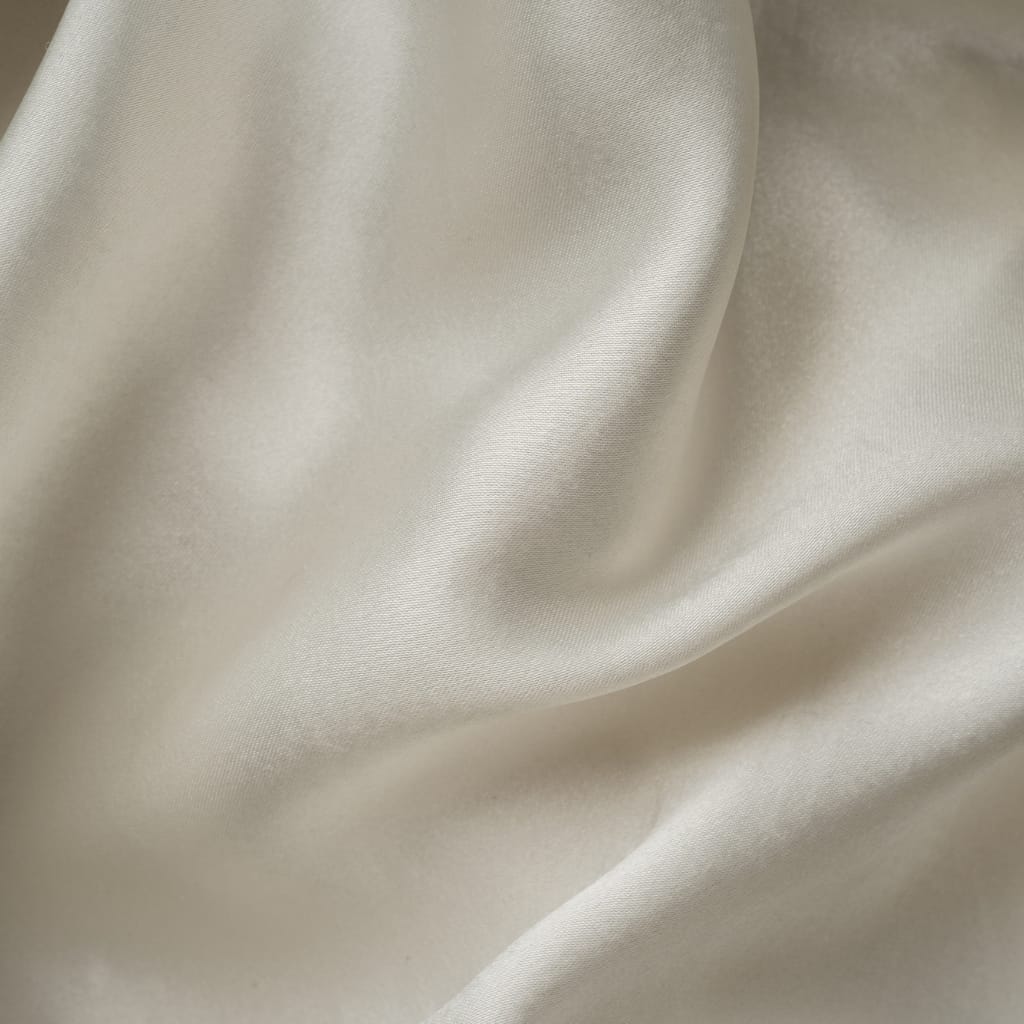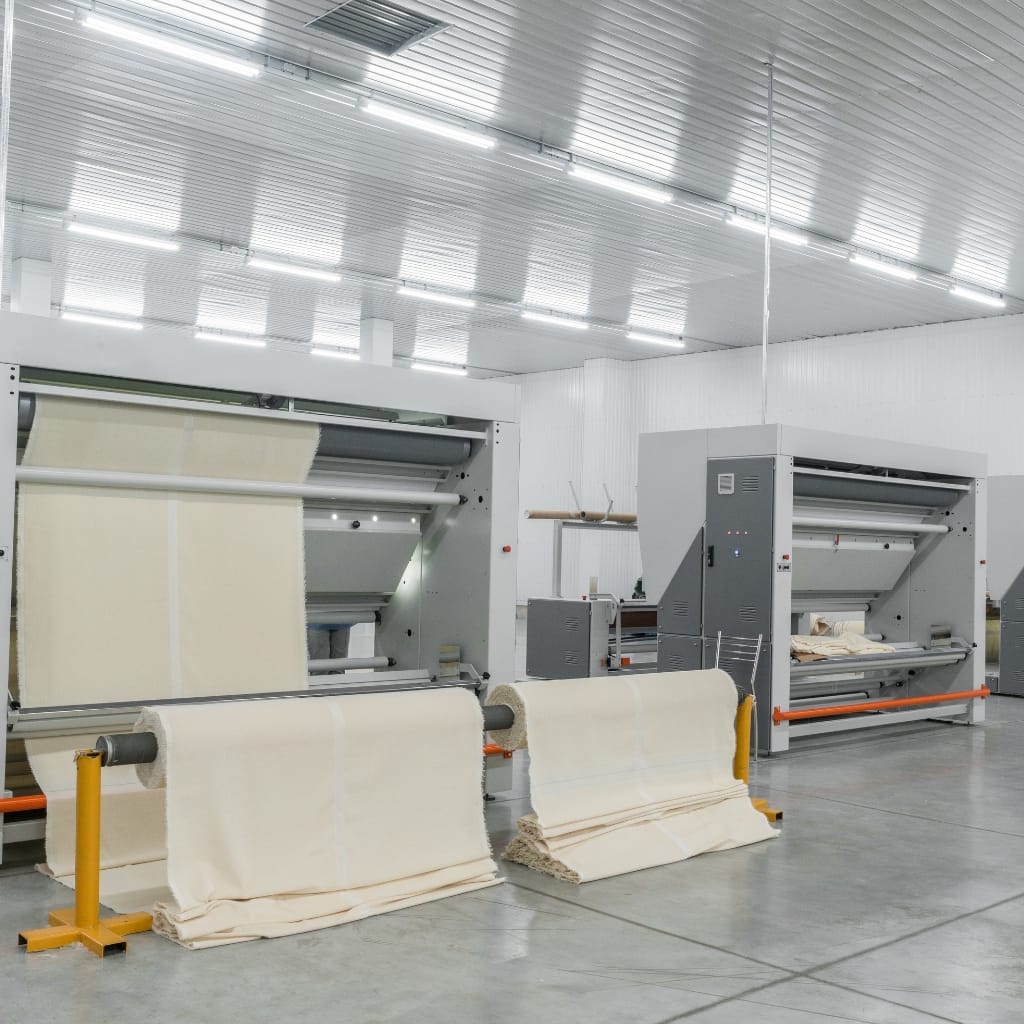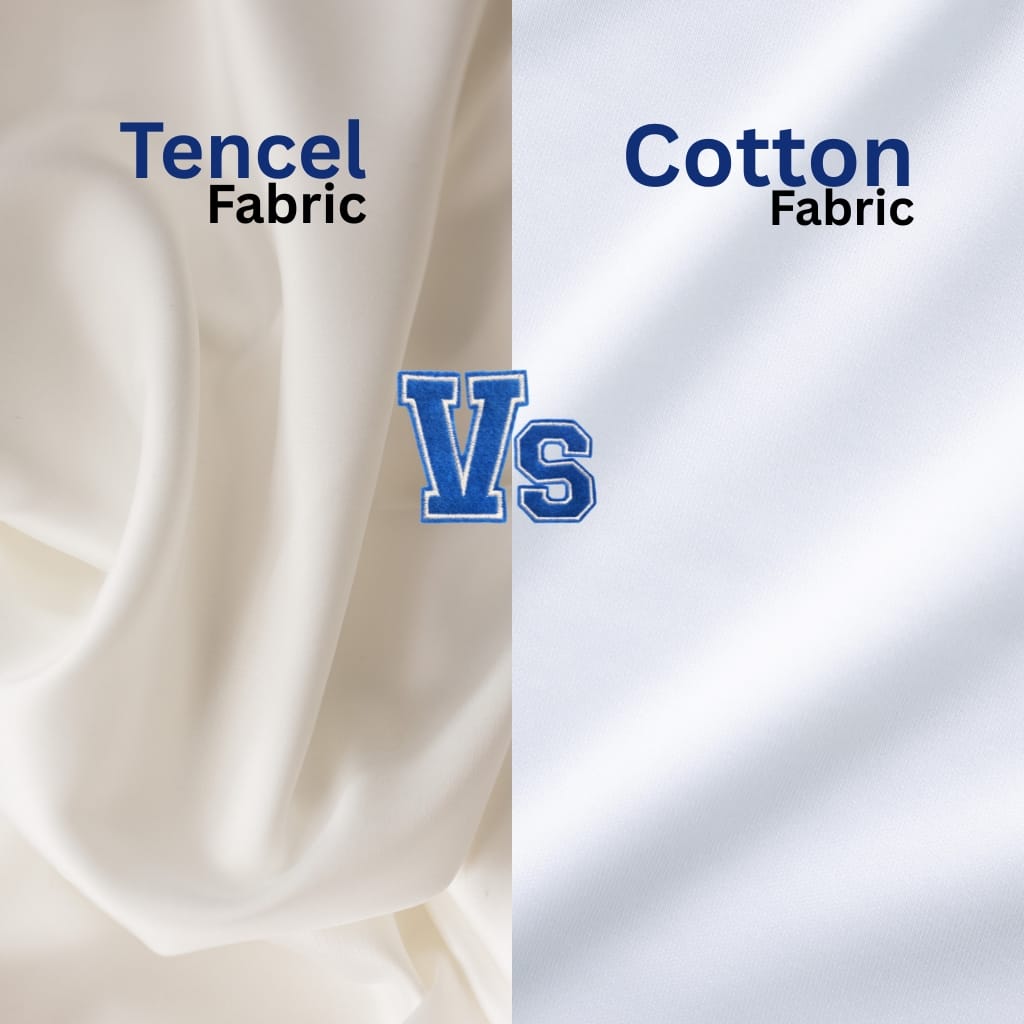Tencel fabric is an innovative fiber created from wood pulp, specifically from eucalyptus, beech, or spruce trees. While synthetic fabrics derive from petroleum, Tencel is an all-natural fabric that is produced in an eco-friendly way. So, what makes it different? This fabric is soft, breathable, and durable.
It is popular among fashion brands as well as eco-friendly shoppers for its silky feel and sustainability. In addition, Tencel absorbs moisture better than cotton so it can keep your skin dry and cool. Because of its smooth fiber structure, Tencel is perfect for sensitive skin and hypoallergenic requirements.
The keyword “What Is Tencel Fabric?” is not just a question, it invites someone to learn more about one of the most promising fabrics of our time. Tencel remains a sought-after fabric as the fashion industry adopts eco-friendly practices. Join me as we uncover why this fabric is gaining global attention.
Table of contents
- The Origin and History of Tencel Fabric
- Tencel Fabric Production Process
- Tencel Versus Cotton: A Soft Showdown
- Why Tencel is the Sustainable Fashion Hero
- Is Tencel Biodegradable and Compostable?
- The Feel-Good Factor: Comfort and Wearability of Tencel
- How Tencel Supports Ethical Fashion Movements
- Brands Leading the Tencel Revolution
- Conclusion
- FAQs
The Origin and History of Tencel Fabric
Tencel is not just a trendy fabric, it has history. It was developed by the Austrian company Lenzing AG in the 1990s. The actual fiber is called lyocell, and Tencel is the trademarked brand name.
Tencel was designed as a more efficient alternative to the traditional viscose rayon. Unlike the rayon’s brutal chemical processes, Tencel employs a closed-loop system where the water and solvents used during production are recycled. As a result, tencel creates far less pollution.
This development substantially transformed the textile industry. Later on, Tencel received international certifications such as OEKO-TEX and FSC, proving its dedication to responsible manufacturing. Today, Tencel is integrated into products ranging from common T-shirts to luxury bedding and high-end fashion.

Tencel Fabric Production Process
The magic of Tencel truly begins at the manufacturing stage. It all begins with the sustainably harvested trees, which are chipped into small pieces. Then, they are dissolved via a non-toxic solvent called NMMO (N-methylmorpholine N-oxide). This is done in a closed-loop system where 99.5% of the solvent is reused.
The next stage involves filtering the pulp and spinning it into long fibers, which are dried and woven into fabric. Notably, this entire process requires significantly less water and energy than cotton production.
In addition, Tencel does not spew harmful microplastics like synthetic materials do. The final product is a gentle yet protective fabric that is smoothing and soft on the skin while being eco-friendly.

Tencel Versus Cotton: A Soft Showdown
Let’s be honest. For decades, cotton has been the king of comfort. Tencel is gunning for that crown now. Why? For one, Tencel is stronger and more durable than cotton. It also beats cotton in moisture-wicking, keeping you dry throughout the day.
While cotton requires vast amounts of water along with pesticides, Tencel comes from fast-growing trees that need neither irrigation nor harmful chemicals. Furthermore, Tencel uses 80% less water in its production.
After washing, cotton wrinkles and shrinks easily while Tencel retains its shape and requires little to no ironing. To sum it up, Tencel not only provides comfort but surpasses cotton in sustainability and practicality.

Why Tencel is the Sustainable Fashion Hero
The fashion industry faces serious critics for eco-violations. Fast fashion creates landfill mountains and chokes the oceans with plastic. On the other hand, Tencel is a sustainable superhero.
First, the closed-loop production system results in little waste. Second, it is biodegradable, returning to nature instead of languishing in landfills for centuries. Finally, it has a low carbon footprint.
By selecting Tencel, brands make a mark in ethical fashion. And shoppers donning Tencel also make a statement. Style is no longer the sole consideration; values matter too.

Is Tencel Biodegradable and Compostable?
Yes, Tencel is fully biodegradable, even better news. Tencel can decompose under the right conditions in as little as 8 weeks.
So, Tencel won’t pollute the planet when tossed away. Unlike polyester, which takes up to 200 years to break down, Tencel’s decomposition is both swift and clean.
If you home-compost, check if a Tencel item is blended with other fibers. While pure Tencel is safe for compost, blends may require special handling.
The Feel-Good Factor: Comfort and Wearability of Tencel
Heavenly is the only word that can describe it. Tencel feels like a blend of silk and cotton. Soft and smooth, it drapes beautifully. The fabric is naturally breathable, so it performs well in hot climates and during strenuous exercise.
It absorbs moisture quickly and releases it just as fast, which means there’s no clammy skin or bad odors. For this reason, Tencel is often used in sportswear and underwear.
What about those with sensitive skin or allergies? Tencel is hypoallergenic. There is no itch or rash, just comfort.
How Tencel Supports Ethical Fashion Movements
Tencel fits perfectly within the ethical fashion paradigm. It honors both people and the planet. The raw material originates from responsibly managed forests. The employees receive righteous treatment, and the manufacturing does not use harmful production processes.
In many instances, companies that manufacture products from Tencel also practice ethical business models. Such businesses pay living wages, provide safe employment conditions, and practice diversity in hiring.
In a nutshell, choosing Tencel is opting for an ethically sound supply chain and sustainable resources that upholds human dignity.

Brands Leading the Tencel Revolution
Some of the world’s most forward-thinking brands are embracing Tencel and you find it in collections from:
- Patagonia – known for performance wear with a conscience.
- Allbirds – their soft tees and tanks are made from Tencel.
- Reformation – a fashion brand that balances style and sustainability.
- Tentree – plants ten trees for every item sold and extensively uses Tencel.
These brands show that maintaining sustainability does not mean losing your sense of fashion.
Conclusion
Tencel is more than a piece of fabric; it is a statement and emblem of responsible living and mindful consumerism. Tencel is at the forefront of sustainable fabric choices that offer softness, durability, and elegance.
Whether you are a fashion enthusiast, an environmentally conscious individual, or just someone who prefers comfortable clothing, Tencel welcomes you with open arms. Remember to check the label on your next purchase; your skin and Mother Earth will appreciate it.
Read more what is acetate fabric
FAQs
It’s made from wood pulp, primarily from eucalyptus, beech, or spruce trees.
Yes, it uses less water, energy, and avoids harmful pesticides.
Pure Tencel is biodegradable and compostable under the right conditions.


